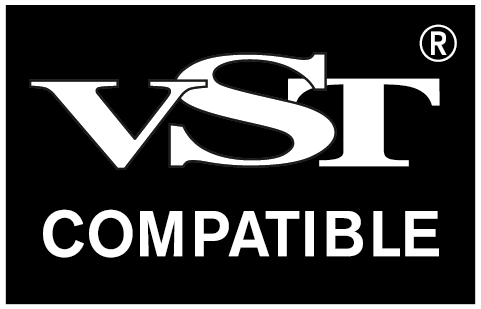Since the
foundation of the company in 1984, Steinberg has constantly
pushed back the boundaries of what is possible in digital
audio. Our groundbreaking technologies offer flexible,
cost-effective and intuitive ways of realizing your full
creative and professional potential, and for the basis of
countless production environments around the globe.

eLicenser: License management
and copy protection The eLicenser anti-piracy solution
protects software applications and digital content against
piracy and illegal copying — over the complete product life
cycle. The eLicenser technology fully integrates
hardware-based copy and intellectual-property protection
with secure digital rights and license management. This is
the only anti-piracy solution today that is able to
successfully protect consumer software products against
cracking techniques used by international hacker groups.
Please visit www.eLicenser.net for more information.
AI: Advanced Integration AI
stands for Advanced Integration, being a technology
developed in close collaboration between Steinberg and
Yamaha. The AI technology allows for a seamless integration
of the DAWs developed by Steinberg into the digital audio
hardware from Yamaha and Steinberg. AI provides
plug-and-play at an as-yet unknown level: now the software
automatically carries out the the required settings of the
connected hardware, such as selecting drivers, input and
output configuration and the remote settings. In addition,
the technology also offers various dedicated remote
functions, data exchange and much more.
Studio Connections: Total
software and hardware integration Studio Connections is an
open standard developed by Steinberg and Yamaha with the
express purpose of opening a new era in software and
hardware integration. This innovative technology combines
the strengths of both worlds, allowing for a new generation
of outstandingly flexible and efficient audio production
systems.
Until the introduction Studio
Connections, parameter editing in hardware and software were
completely separated from one another. With Studio
Connections, all settings for an entire studio can be saved
and recalled at any time (Total Recall) within the host
application project file. The seamless integration of
external hardware into software production environments also
means that these units can now be used just like software
plug-ins. Graphic user interfaces are available for any
sound generator that supports Studio Connections, with
instant user editability through the software application.
VST: The integrative standard
for virtual instruments and effects The Virtual Studio
Technology (VST) interface is nothing short of a revolution
in digital audio. Developed by Steinberg and first launched
in 1996, VST creates a full, professional studio environment
on your PC or Mac computer.
VST allows the integration of
virtual effect processors and instruments into your digital
audio environment. These can be software recreations of
hardware effect units and instruments or new creative effect
components in your VST system. All are integrated seamlessly
into the host application. From the PPG wavetable
synthesizer to Steinberg's HALion sampler: all are routed
directly to the VST mixer in Cubase or Nuendo.
Because these connections are
virtual, there is no need for messy audio or MIDI cabling.
These VST modules have the sound quality of the best
hardware units, yet are far more flexible. All functions of
a VST effect processor or instrument are directly
controllable and automatable, either with a mouse or with an
external hardware controller such as Steinberg's Houston.
VST also allows easy integration of external equipment,
allowing you to put together a system tailor-made to your
needs.
Being an open standard, the
possibilities offered by VST are steadily growing. New
virtual effect processors and virtual instruments are
constantly being developed by Steinberg and other companies.
Leading VST instrument creators include renowned software
companies such as Waldorf and Native instruments. Companies
such as Spectral Design and TL Audio have contributed
virtual effect processors.
ASIO: Steinberg's low-latency,
high performance audio standard The Audio Stream
Input/Output (ASIO) architecture forms the backbone of VST.
ASIO addresses any needs a professional audio recording
solution might have. It does this by supporting variable bit
depths and sample rates, multi-channel operation and
synchronization. As a result, the user gets low latency,
high performance, easy set up and stable audio recording
within VST.
The entire system becomes
controllable and offers complete and immediate access to the
audio system's capabilities. Since its introduction, ASIO
has become a supported standard by many leading audio
hardware manufacturers - for good reason.
VST System Link: True
connectivity for your virtual studio This revolutionary new
standard brings true connectivity and platform independence
to the digital audio world. VST System Link enables the
transfer of synchronization,transport and audio data between
two or more workstations equipped with compatible software
and hardware over standard digital audio cabling systems
such as ADAT, TDIF, AES/EBU or S/PDIF. Because it uses the
audio stream itself, synchronization is completely sample
accurate, even across multiple workstation configurations.
VST System Link lets you take your audio projects to new
levels of complexity, and offers unbelievable flexibility in
your working environment.
LTB: Accurate MIDI timing With
Linear Time Base (LTB), Steinberg have created a
communication protocol which offers sub-millisecond MIDI
timing accuracy. LTB is utilized by the MIDEX series of
hardware MIDI USB interfaces to offer the lowest latency of
any MIDI interface available. The new standard has already
been integrated into Cubase and Nuendo.
VST Expression: VST Expression
breaks the limitations of the MIDI standard and opens up
entirely new ways of articulation and controller editing.
The latest version, VST Expression 2, includes three core
technologies: Note Expression, Expression Maps and VST
Dynamics. While Note Expression is a smart approach to
create and edit multiple controller values on single
note-level, Expression Maps provide an intuitive way of
working with instrument articulations. For the most
authentic arrangements, VST Dynamics adds a convenient
Articulations/Controller Lane to the Key and Score editors.
Seamlessly integrated in Cubase 6, VST Expression 2 is the
composer’s choice for creating ultra-realistic orchestral
arrangements as well as unique sound effects.

